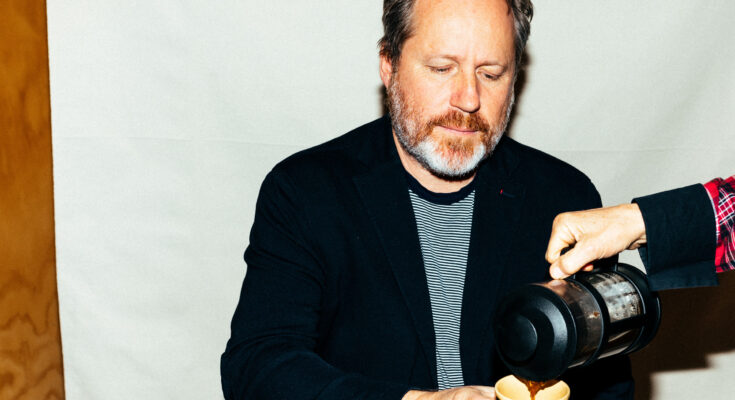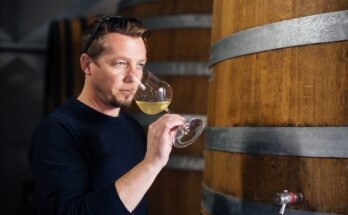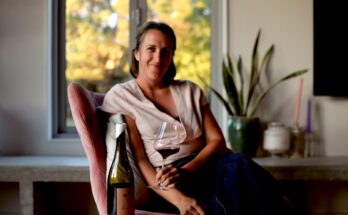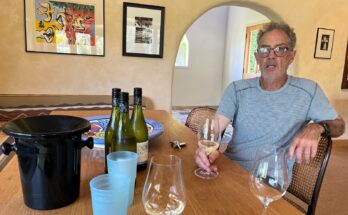Heading back to visiting wineries and vineyards after weeks and months of Lockdown restrictions; I found myself on the motorway out of Auckland at 5am one morning. Later that day I met up with another of New Zealand’s current crop of award-winning of winemakers. Live from their Te Awanga Cellar door – Rod McDonald.
WineFolio: Lets’ start with some easy ones – can you tell me how you got started in winemaking – was it in Hawke’s Bay?
Rod McDonald: I moved to Hawke’s Bay in 1993 to start a job at Vidal as a cellarhand, and then I was there with George for 14 years, and took over as winemaker in late ’97; and then in 2006 eventually left to start my own wine business. Which was initially called Rod McDonald wines and that’s where we started making Quarter Acre. So the first vintage of that was around 2007-2008. As well as building a branded wine business, did a lot of consulting and contracting for other people – around Hawke’s Bay but also some bigger clients in other parts of the country. So making wine for other wineries, and that has built at the same pace and time as the branded wine business. Still do that – when I left the Villa Maria Group my role was a very specific, technical, hands-on, winemaking role. And when you start your own business, you have to look at your skills, and what other people can’t do – and winemaking was the advice I could generate income from.
Then as the business has grown, we have leased and purchased and accumulated vineyards along the way. We then re-branded everything under Te Awanga Estate about three years ago; and as we are now, we farm about 70 hectares across Hawke’s Bay in three main sites. We’ve got a total of eight vineyards, but five of them are really small, just a couple of hectares each. About three quarters of that is under organic farming, certified by BioGro; and the other 25% is still in conversion. The wines we make, apart from our entry level wines, are all Estate-grown. So we don’t buy in fruit for Trademark or Quarter Acre or the Te Awanga Estate wines.
We don’t own all the eight vineyards – that would be nice – but we do all the farming.
In terms of range or tiers, we have our Trademark which is our top wine – we’ll try the Chardonnay and Syrah today. And the Quarter Acre is the Reserve series, and then we have our Te Awanga Estate – a range of six wines, red and white. And then we have ‘the Loom’ which is actually the Reserve wine for the Te Awanga Estate – so it’s grown right here as a single vineyard. Then we’ve got our ‘one-offs’ which as the name suggests is small-runs of peculiarities.
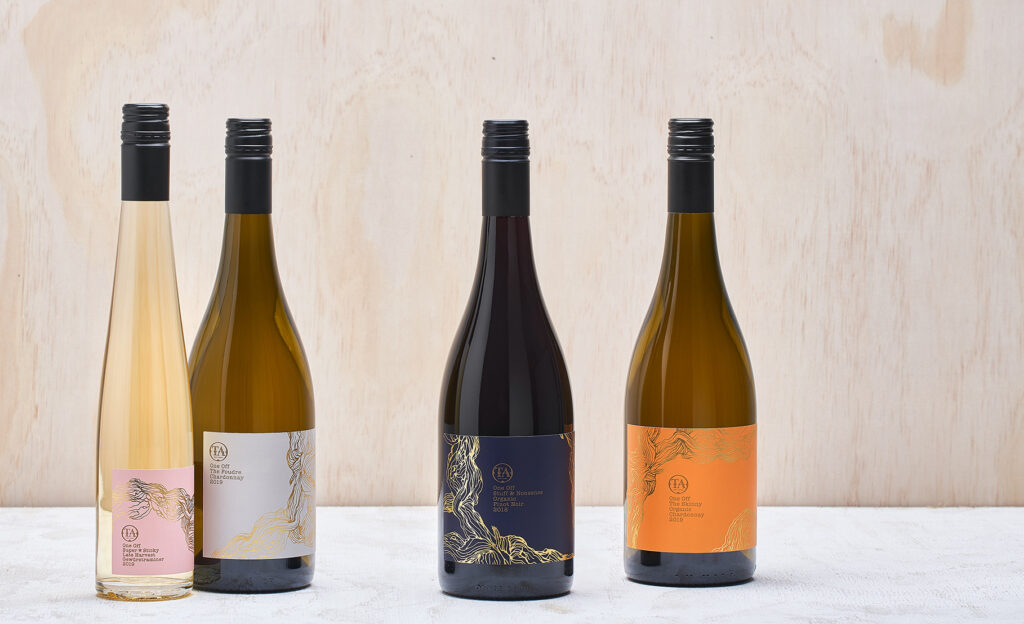
WF: I would say that as well as the range, I think you’re equally known for doing lots of interesting stuff. It’s almost “what are they going to do next?” type of thing where people follow you on Social Media to keep up to date with the new, eclectic wines you’re doing, so they don’t miss out!
RM: That’s what the One-offs are for. It goes back to that original thing you know, where I don’t come from a business angle, I come from a winemaking angle. And that’s the fun part. Winemaking is about trying some stuff and playing with ideas, varieties and techniques.
WF: That’s the ‘craft’ part of it. Almost like craft beer – where people are always after something new. In a craft beer place, they want to have something new straight off. Then they might settle back to their tried-and-trusted.
RM: That’s bang on. For us, it’s brings people to us, keeps them interested, keeps us interested and it keeps us driving forward in terms of techniques, varieties and styles. But the danger is that you build a reputation for the peculiar and you don’t transition people into the stable. We love making the one-offs, but we’re serious about the fine wines that we make.
WF: So is there a danger that you’re everyone’s a favourite ‘quirky’ winemaker, but not their favourite serious wine?
RM: Exactly, our ambition is that we demonstrate our understanding, and expertise in crafting some of Hawke’s Bay’s best and most classic styles of wine – Chardonnay, Merlot, Syrah. But then we are real people, and we enjoy what we’re doing and are enthusiastic about it, and Hawke’s Bay is more than just those traditional wines.
WF: I think it shows something and people would take the story from that – that you’re not just standing still. You’re not just doing the same-old, same-old. I like that. I would liken your brand to Framingham in that you’re eclectic, a bit irreverent and quite Rock n roll – with almost musical elements to your work. And I think wine often does, in an artistic sense. But also places like Terra Sancta who’ve got some of the oldest vines in Bannockburn, but are in no means standing still. Doing a skins-y Gewurz or an Italian blend.. I hugely respect that approach.
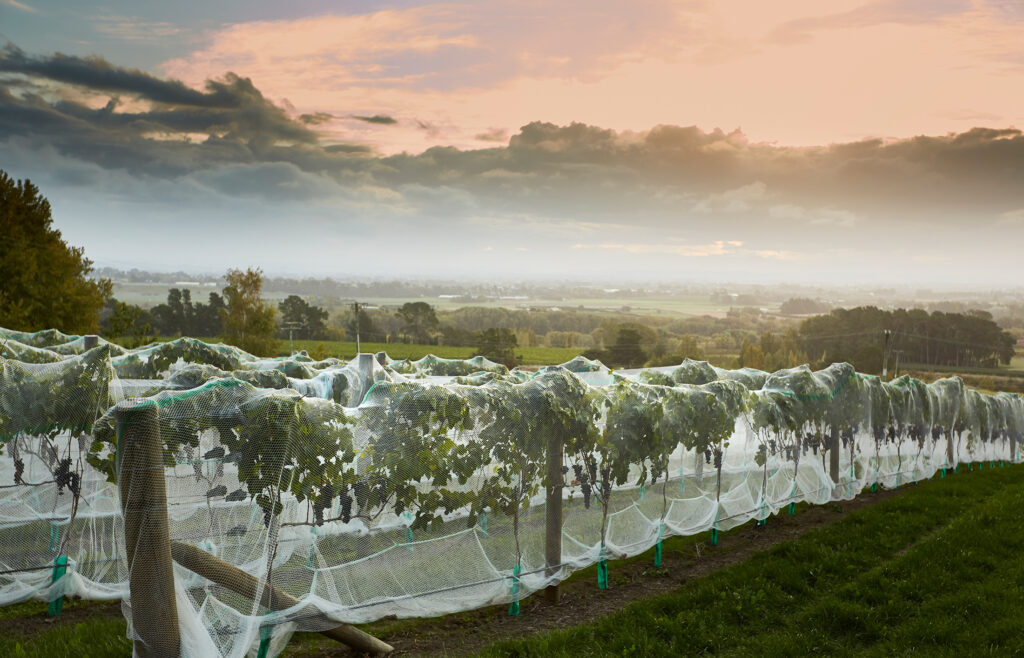
RM: People may come looking for a One Off wine that we made last year, and we don’t have that now, but ‘this is what we’re thinking now’..
WF: And some of what you’ve done will inform what you do all the time. You’ll try a natural ferment or something and it will be partly adopted into other wines?
RM: I could point to wines in our range that started as a one-off and then became part of it full time.
We grow Sauvignon here at the coast, but we also grow it 35-40km inland. So we’ve got an inland vineyard and a seaside vineyard, and the difference in flavour profile and wine style that you produce by being 40kms apart is phenomenal. Te Awanga has got this beautiful chalkiness to the acidity, a lovely lemongrass, fennel bulb character that comes through. It’s quite a herbal style and we tend to pick it a brix or two less than we pick the inland block.
But the inland block produces a wine that’s much more textural, much more fruit-forward, lower acidity – and quite unique! You can’t suppress the typical exuberant New Zealand fruit, so you have to figure out a wine style that still offers complexity, nuance and drinkability that you see with European wines, but it’s got to have this thread of New Zealand as well.
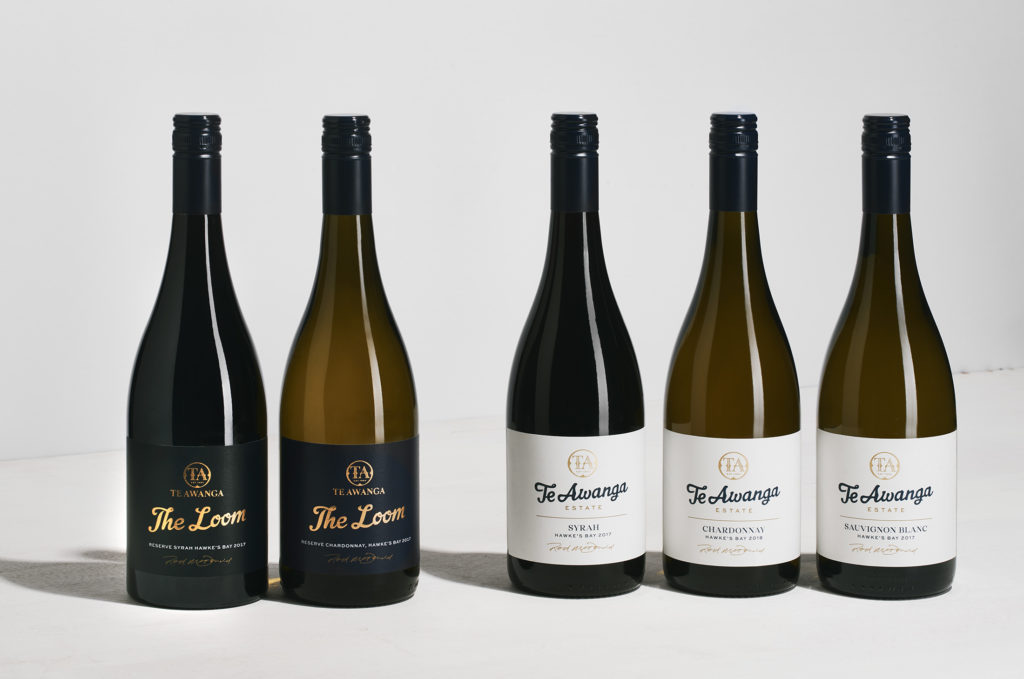
In Europe, people might taste a New Zealand Chardonnay and describe it as sweet because of the fruit forward nature of our wines. And there’s this language thing, where people taste ‘fruit’ and they think ‘sweet’, but the wines are bone dry. That takes a bit of getting used to if you’re a Frenchman – you taste New Zealand wine and think ‘it’s jungle juice’ Have you heard of a fella – Yves Cuilleron? They stock his wines in New Zealand, and he’s a much admired northern Rhone producer.
He was the guest speaker at the Tongariro Syrah Conference a couple of years ago, but stayed the 3 days, taking part in all the tasting workshops. He stood up at the end, closing remarks and said “I was delighted to get the invitation as it’s my first trip to New Zealand. I travel the world a lot supporting my brands and talking to conferences. And I have never tasted wines from anywhere else in the world that remind me more of my home.” Now, we want to taste of here! But I think he was talking about the weight, style, finesse, balance and length.
WF: I think the Pinots are heading in that direction as well – weight, length, finesse. I sometimes struggle to see the differences on the palate of good New Zealand Syrah and Pinots, it’s like they are aligning in characteristics.
RM: We make our Syrah like a Pinot, with a lot of the same techniques.
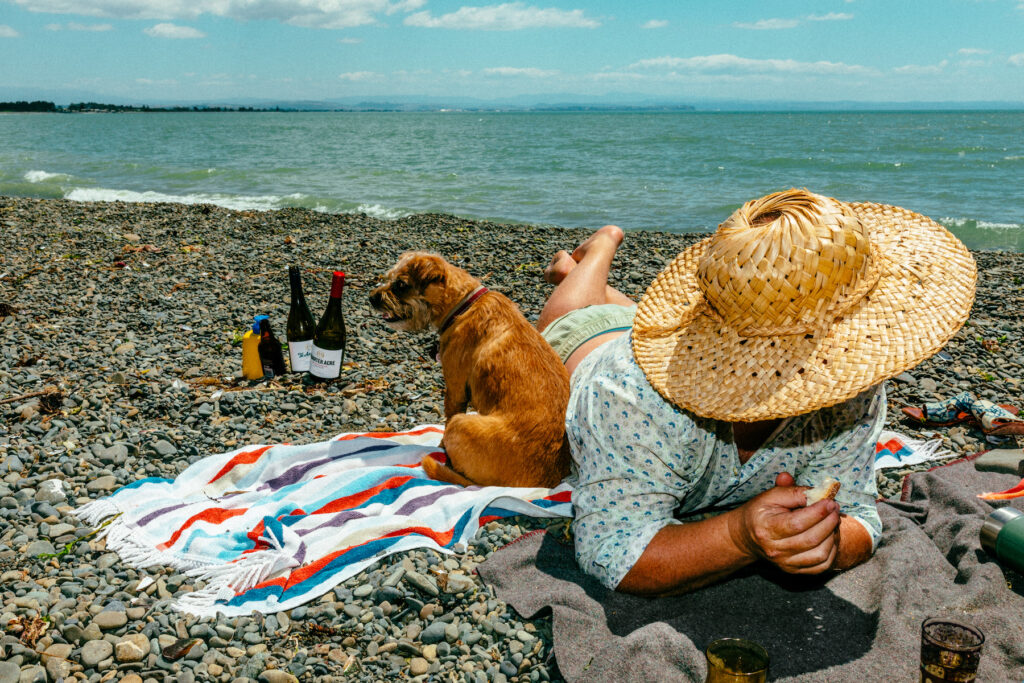
This our Quarter Acre Chardonnay. It comes from another old vineyard – Doc’s Block. Mike Hewitt owns it and we’ve been taking fruit from it since the first year we started. That’s been the source of the Quarter Acre wine right through. 25 year old plus Mendoza and it ripens late in the season – it’s a slow block. The growing seasons are so up and down now anyway in terms of heat and rainfall, quite volatile from a weather point of view.
For our one-off chardonnay this year we’ve done a skins-ferment chardonnay. We re-developed the chardonnay block, one of the Mangatahi blocks – planted 3 new clones of chardonnay side by side. Both new to us and new to New Zealand. And one of those clones has this really unusual muscat-like character that’s almost Riesling-like as you walk up and taste the grapes. When we used our usual technique and thinking with it, we ended up making this really odd barrel-fermented muscat style of Chardonnay? Then we thought ‘OK if it’s going to do that, and it’s got this flavour… let’s figure out a one-off that makes the most of it’ So we skin fermented it, left a bit of residual there, and un-fined and un-filtered. Natural’ish wine. It’s got this floral lift and smells as if it’s going to be a bit sweet, and then it’s not – only about 4grams. And to your point earlier – we learnt, because this is our third skins-ferment wine, and we learnt to be confident about leaving it on the skins, and not adding sulphur. A lot of things which we’re applying to other wines. It’s sold mostly through the Cellar Door, and really positive feedback.
‘The Loom’ Chardonnay is from old Mendoza vines here at Te Awanga – about the same age as the Quarter Acre – free draining, alluvial but a bit more volcanic ash with quite shallow topsoil. It’s a much more textured old school style. We see a consistent character from this block and it always gets ripe, so it’s just a question of how much heat there is in the season and how much natural acidity there is. So we handpick the Mendoza and run it straight to about 15 barrels. We look at the year and taste the wines and we might put half of the barrels into the cold room. Come spring, the other half at ambient temperature will go through malo, so that year it’s 50% malo, for example.
WF: so when someone says it’s 50% malo, is that how it’s done – you just let half the content go through malo, and then put them together after – or is it possible to do it all but stop if halfway – to get that 50% – and is there a difference?
RM: You can do that. But that’s a different thing. So what we’re trying to create is texture and the right acid balance by using malo. Not really looking for flavour. If you want the process of malo to give you flavour, then the best way to do that is to stop it halfway. Because the process of malo turning malic acid into lactic acid, it produces diacytel – like butter. And if you stop it halfway through, then you’re at full butter, whereas if you go through and then the lees work degrades the diacytel character. So it’s possible to make – and this was actually my project when I did my Post-Grad at Lincoln… I produced a 100% malo Riesling that showed no malo characteristics but was richer and more textured, and lower acidity obviously.
A lot of the flavour that people associate with malo – because the way the story has been told – is actually to do with natural ferment and lees contact and stirring. The flavour associated with malo – depending on how you handle it – can be buttery, or brulee; but probably more attributed to work on the lees.
The Trademark Chardonnay is from a single vineyard on Havelock North Terraces – again, old vines; again, Mendoza – but this is the full tilt. It has a clay pan but the soils can get pretty puggy on a wet year, but it’s relatively free-draining with alluvial gravels underneath. It can be a polarising wine. That’s been judged as a ‘no-award’ at a New Zealand wineshow and Bob Campbell judged it as his top wine from Hawke’s Bay of 2019. Robert Parker Wine Advocate in America gave it the top score 94 points for New Zealand Chardonnay for the year; and then it got no award somewhere else, in New Zealand. So it’s a love or hate thing.
WF: I’m surprised because this seems to me to be a wine with great balance? I can’t see too much to polarise in this? Something like the Tom from Church Road, yes – because it’s so overt in it’s a wine very much of ‘style’?
RM: Well I agree with you and I’ve always loved it!
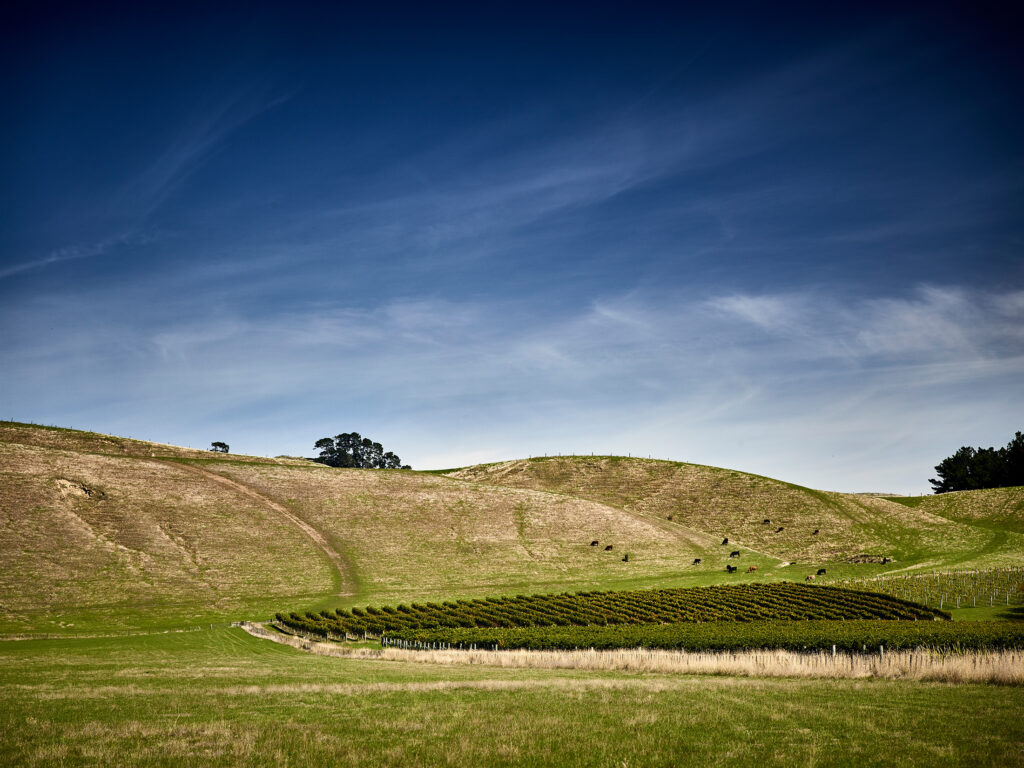
WF: You’ve had a such a run of good years though.. you won’t remember how to handle a bad one when it comes around again!
RM: Let’s hope. This year was dead easy.
WF: How did you cope with the situation though?
RM: The beauty of being smaller is that we can be really careful about looking after our people, and making sure we adhered to all the rules; but we didn’t have to make ‘corporate’ decisions about how Lockdown was going to look and how we’re going to react as a business.
It was just harvest, but a lot of extra thinking about how to mitigate risks of any possible transfer of the virus. It wasn’t as much fun as a normal year, but the weather and fruit were amazing! Funnily enough things like, having the roads to ourselves – not getting caught up in traffic. But it did take a lot of the ‘fun’ out of it. Usually there’s always a catch up between shifts, and have a beer a couple of times a week. There was none of that. It’s easy to get yourself in a twist and spiral down a bit. Of course every region was different. There was a period of time after the announcement to go to level three and four, before we found out if the wine industry would be classed as essential or not, that was pretty stressful.
The Quarter Acre Syrah is the wine that was probably our first big international accolade with the 2015, winning the Best International Syrah at the London IWC; Best International Syrah and then Best Red Wine of Show and then the Trademark won the Best International Syrah again two years later. Then the 2016 Trademark Syrah was in the International Top 100 in Drinks Business Magazine in 2019.
Quarter Acre is a combination from our Bridge Pa vineyard and some of some of the hillside slopes that we’ve got. The Loom is from the vines out by the Cellar Door. Elephant Hill have some out on the slope behind their winery and on years when it’s good, that’s their best Syrah. Our experience is that we’ve made a ’17, ’18 and now ’19 and ’20 and every one is a cracker. In terms of ripeness, aromatic, richness – and that’s from young vines. All our Syrah is made in the same way – like pinots – they all have a cold soak, a little bit of whole bunch, 100% whole berry, all have a hot, natural ferment with plunging during the peak of ferment 3-4 times a day. And then buttoned right off. Then a relatively long time on skin, straight to barrel, then nothing until spring malo. Really hands-off traditional Pinot winemaking. The only major difference is the place that it comes from.
WF: Do you have to be careful with the oak?
RM: They’ve all got a reasonable wodge of new wood as that helps with the age-ability and the future of the wines.
WF: are you one of those people who thinks that Syrah will be the best of Hawke’s Bay?
RM: I think so, we’re world famous for it. We’ve got the dirt for it, it’s just that everyone has planted Cabernet and, particularly, Merlot. I think Syrah has the potential and has the characteristic that Pinot has – to reflect its site beautifully. So when you grow Bordeaux in New Zealand it’s about getting it ripe. Ripeness is everything and site is less imprtant. Whereas Syrah and Pinot it’s more about where it comes from. There’s no way you taste a red metals wine, and one from a hillside here, and think they’re the same wine. But a ripe Merlot is just Hawke’s Bay.
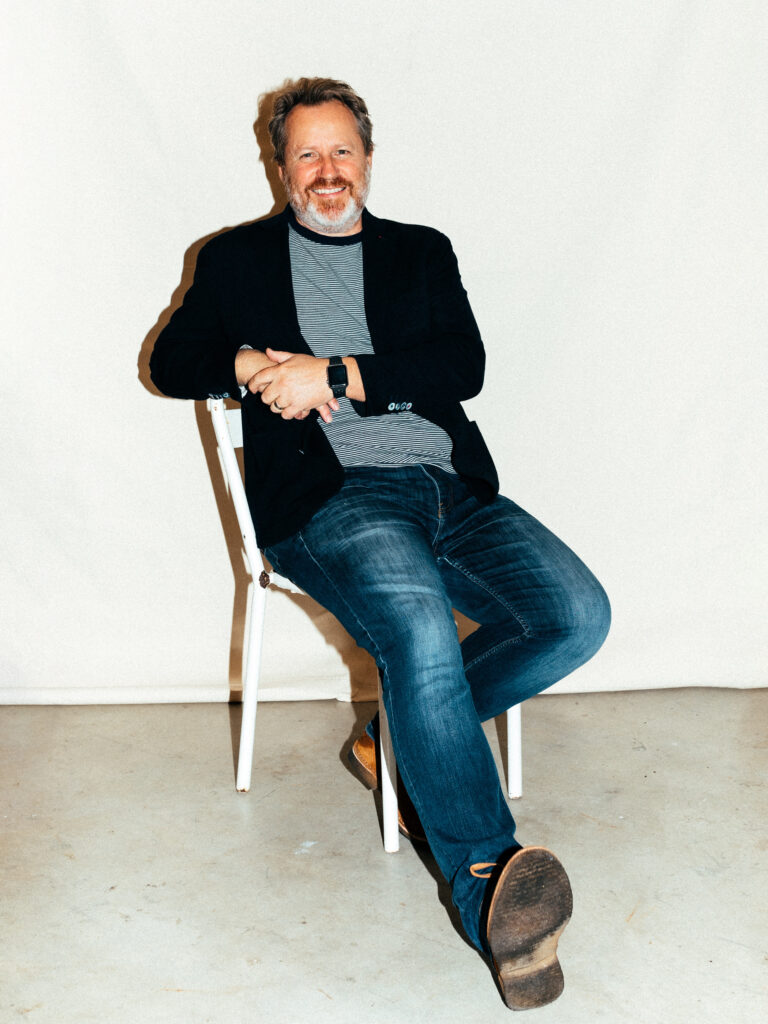
When I left the Villa Group, our business plan was that we wanted to make New Zealand’s great Syrah. That was what we set out to do. The reality is that when you’re out on your own and your working capital is your mortgage, you pretty quickly work out that you’ll go broke if you just make Syrah – two years in barrel, 12 months in bottle before you release it. It’s a recipe for financial disaster. So by introducing new varieties as a business it makes a lot more sense. Now with business having some momentum, we can re-focus on the thing we started out to do.
WF: I know and love your Chardonnays, and I think you are well known for those. But these Syrahs.. I’ve had those wines that are considered the great New Zealand wines, and these Syrahs certainly stack up with those.
RM: If you look at New Zealand’s results in terms of those varietal Trophies from overseas – the world thinks the same. They pick out New Zealand Syrah – whether it’s ours or the Homage that won James Suckling’s top award. They like our Chardonnays, and the Pinots, but the Syrahs are right up there with the very best.

